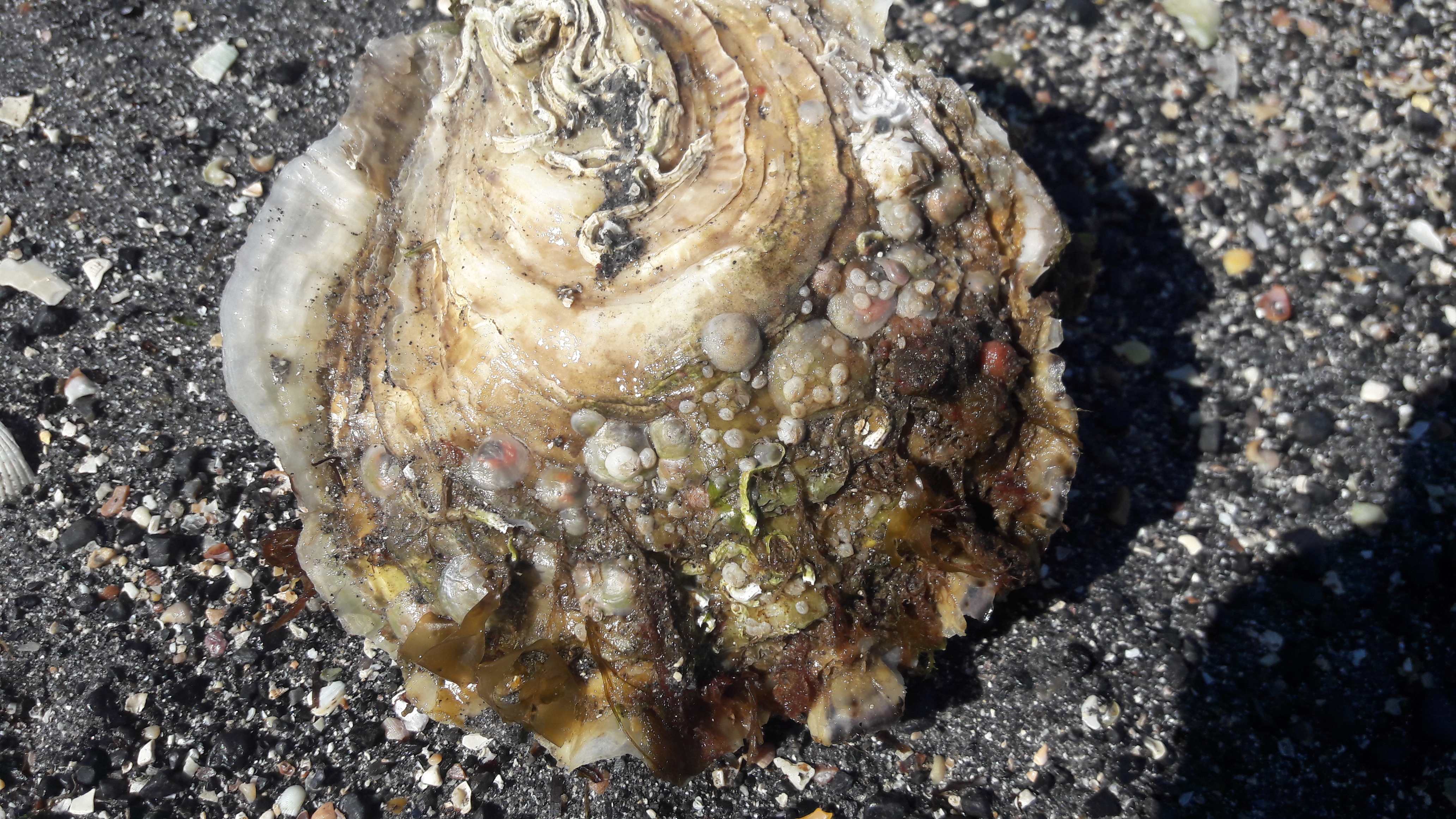The native European flat oyster is depleted throughout its former European range. Ireland still has a number of extant populations some of which are commercially fished but production and productivity is much reduced compared to historic levels. Oysters, in addition to being commercially valuable and a significant potential source of income for coastal fishing communities, provide valuable ecosystem services such as carbon sequestration, maintenance of water quality and provision of structural habitat that may support high biodiversity.
Restoring and managing currently depleted oyster stocks in Ireland would have significant benefits for oyster co-operatives in providing seasonal incomes from fishing. A potential post-restoration gain of €2.5m per annum and hundreds of seasonal jobs in fishing could be realised. For instance, in 2021 native oyster production in Tralee Bay alone, which supports a productive oyster stock was 305 tonnes worth €1.3m and contributed incomes to 200 people.
Oysters are key habitat forming species that support biodiversity in Natura sites. Having learnt about current status, risks and key drivers of oyster mortality from the EMFF 2017-2021 oyster restoration project the next steps are to work on restoration interventions that have the highest chance of success and to integrate these with long term management plans for native oyster that ensures parallel protection of conservation objectives while enabling fishing. Fishery management plans and protocols need to be developed with the authorities that are consistent with conservation objectives for habitats in these locations
All native oyster stocks and fisheries in Ireland occur within Special Areas of Conservation (SAC). Ireland is obliged to maintain or restore native oyster as a characterizing species of habitats in SACs and where appropriate to protect its status as a reef forming species and the biodiversity that is associated with biogenic reef.
The key constraint to recovery of native oyster, in some systems at least, is to enhance recruitment and to manage natural and fishing mortality rates. High rates of natural mortality occur in some locations. This is likely to be driven by the pathogen Bonamia ostreae. Over the past 30 years, tolerance to Bonamia has evolved especially in populations that have been selectively bred. The project will undertake transplant trials using strains of oyster that have potentially different tolerances to Bonamia. Other interventions will include the deployment of spat collectors and deploying shell on the seabed to increase spat settlement.
Since 2016 DAFM, Marine Agencies and the inshore fishing industry have worked to develop a protocol for the future management of bivalve fisheries and particularly new fisheries which may be developed. Oyster is subject to current and potentially new fisheries.
All native oyster beds are within Natura 2000 sites and there are specific conservation objectives for oyster habitat (national need and implementation of Habitats Directive). The project will support the development of management plans, measures and restorative actions for oyster beds in these areas.
Plans will include spatial management and development of MPAs within oyster areas to rebuild oyster beds and associated biodiversity, continue assessing feasibility of restorative measures for oysters.
Provide Evidence as to the causes of continued high mortality rates of oysters
Improve protocol for the use of Bonamia tolerant oysters and advice in relation to fish movement orders to maintain any tolerance
Development of approaches to management and conservation of oyster with Inland Fisheries Ireland and DAFM (Aquaculture and Foreshore Division)
Increased stakeholder involvement in development of management plans and awareness of the Natura/MPA network through target groups including all Oyster co-operatives who have delegated responsibility to manage oyster beds (through Fishery Orders, Aquaculture Licences). Agencies including IFI, NPWS, BIM and MI all have a specific role in this respect and will be integrated into the project actions.
Value for money; direct funding of the Oyster co-ops to develop restoration actions and management plans with marine agencies is considered a value for money approach. Scientific oversight of actions by the MI (through contract for services) will ensure appropriate evidence building and learning. The INOFF (Irish Native Oyster Fisheries Forum) will be the focus for knowledge exchange.
The project has a 4 year duration and runs between 2022 and 2025.
IFI are the management authority for native oyster in Ireland, includes the appropriate assessment and planning of oyster fisheries consistent with Natura 2000. MI will develop with IFI management plans for oyster in each location.
Number of interventions completed to improve recruitment of oysters
Evidence as to the causes of continued high mortality rates of oysters
Protocol for the use of Bonamia tolerant oysters and advice in relation to fish movement orders to maintain any tolerance
Number of management plans developed in collaboration with the industry and management authorities
Number of oyster co-operatives, companies, community organisations worked with during the project
Contact Oliver Tully at oliver.tully@marine.ie

